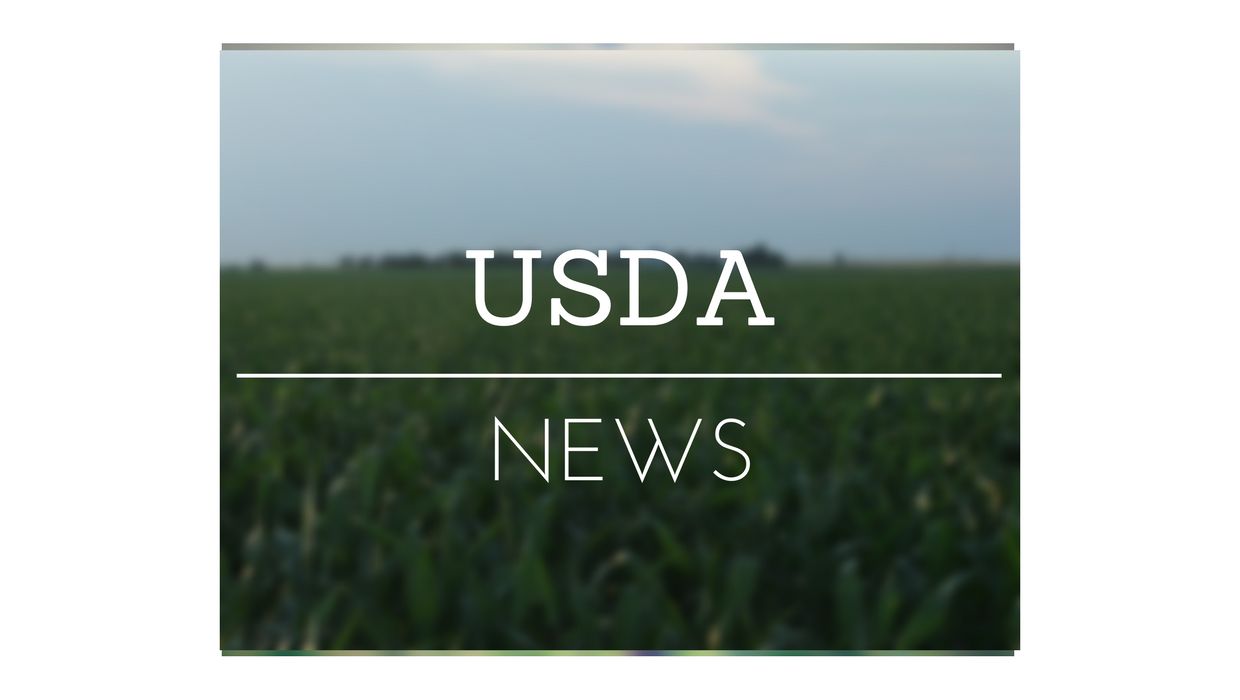The U.S. Department of Agriculture on April 13 announced the availability of more than $330 million to help agricultural producers and organizations in the food supply chain recover from the financial impacts of the COVID-19 pandemic.
The funding ais part of USDA’s Pandemic Assistance for Producers initiative launched in March, and includes $169.9 million for the Specialty Crop Block Grant Program, the availability of $75 million for Gus Schumacher Nutrition Incentive Program grantees and approximately $80 million in payments to domestic users of upland and extra-long staple cotton. This funding will aid in developing new markets for U.S. agricultural products, expand the specialty crop food sector, and incent the purchase of fruits and vegetables by low-income consumers. USDA also informed dairy producers and processors about ongoing plans for the Dairy Donation Program as established in the Consolidated Appropriations Act of 2021.
USDA launched the Pandemic Assistance for Producers initiative in March with $6.5 billion in available funding to address shortfalls and disparities in how assistance was distributed in previous COVID-19 assistance packages, with a specific focus on strengthening outreach to underserved producers and communities and small and medium agricultural operations.
Developing new markets for specialty crops and expanding existing ones
USDA’s Agricultural Marketing Service is announcing $169.9 million for the Specialty Crop Block Grant Program to fund innovative projects designed to support the expanding specialty crop food sector and explore new market opportunities for U.S. food and agricultural products. The total includes:
• $72.9 million available as part of the annual farm bill funding for the program; and
• An additional $97 million available as emergency funding for applications under this solicitation. Congress provided this funding in the Consolidated Appropriations Act, 2021, due to COVID-19 impacts to the food system.
Grant project funding awarded as part of pandemic assistance can also go to organizations to assist farmworkers (e.g., PPE, vaccination costs), projects to fund farmers, food businesses, and other relevant entities to respond to risks and supply chain disruption.
The SCBGP funds are allocated to states and territories based on a formula that considers both specialty crop acreage and production value. Interested applicants should apply directly through their state departments of agriculture. A listing of state contacts is available on the USDA website.
Applications must be submitted electronically through www.grants.gov by 11:59 p.m. Eastern Time on June 11. Any grant application submitted after the due date will not be considered unless the applicant provides documentation of an extenuating circumstance that prevented their timely submission of the grant application. For more information about grant eligibility, visit the SCBGP website.
Incentivizing the purchase of fruits and vegetables for low-income consumers
USDA’s National Institute of Food and Agriculture will invest $75 million as directed by the Consolidated Appropriations Act, 2021. Active Gus Schumacher Nutrition Incentive Program and Food Insecurity Nutrition Incentive grantees may request funding to allow them to address critical food and nutrition security needs of low-income communities, enhance the resilience of food and healthcare systems impacted by the pandemic, and maximize funds reaching participants in communities in need. The GusNIP COVID Relief and Response grants program (GusCRR) helps low-income communities improve the affordability and consumption of fruits and vegetables by vulnerable participants in communities in need. GusCRR grants will support expanded scope of work started under previous awards to address pandemic relief and respond to community needs in an impactful, timely, and authentic way. NIFA will reach out directly to GusCRR eligible applicants with additional details and a copy of the Request for Applications.
Eligibility to receive a GusCRR grant is limited to organizations with a current active GusNIP nutrition incentive grant, GusNIP produce prescription grant, or FINI grant that began prior to Dec. 27, 2020. An eligible organization may submit only one GusCRR nutrition incentive grant application and one produce prescription application.
USDA encourages applications that benefit smaller farms and ranches, new and beginning farmers and ranchers, socially disadvantaged producers, veteran producers, and/or underserved communities. For grants intending to serve these audiences, applicants should engage and involve those beneficiaries when developing projects and applications.
USDA is also updating the currently open FY21 GusNIP RFA to more closely align with the law and extend that opportunity by two weeks to provide potential applicants additional time to consider the full range of available funding.
New assistance for cotton users
USDA will provide approximately $80 million in additional payments to domestic users of upland and extra-long staple cotton to support textile mills impacted by the pandemic. Under this one-time payment program, known as the Pandemic Assistance for Cotton Users program, USDA will pay $.06 per pound to domestic users based on a 3-year monthly average during 2017 through 2019, covering 10 months in 2020. The program and payment formula were established by the Consolidated Appropriations Act, 2021.
Consumption information previously submitted to USDA’s Agricultural Marketing Service by domestic cotton users as participants of the Economic Adjustment Assistance for Textile Mills and Special Competitive Provisions for Extra Long Staple Cotton will be used in determining payment. USDA will send payment certifications in support of payment issuance to EAATM and ELS program participants. USDA could begin to issue payments to domestic cotton users in mid- to late April 2021.
If you were a user of domestic cotton anytime from Jan. 1, 2017 through Dec. 31, 2019 and did not participate in EAATM or ELS programs and have documentation to support your claim according to the provisions of the Act, please contact AMS’s Warehouse and Commodity Management Division.

